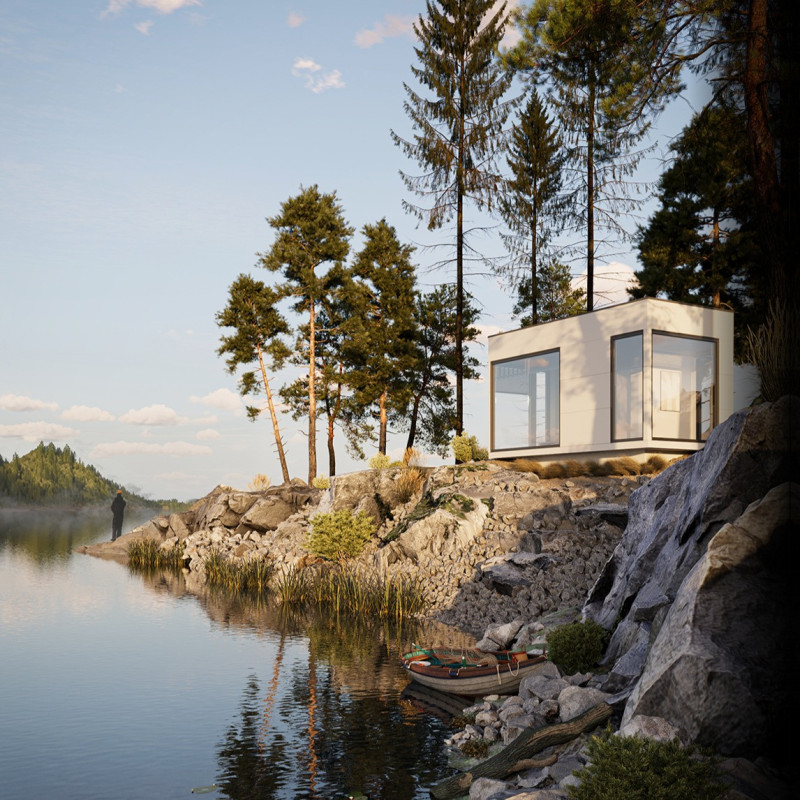5 key facts about this project
The project represents a merging of form and function, with an emphasis on adaptability. It is designed to serve as a multipurpose hub, catering to diverse community events and activities. This flexibility is a vital characteristic, allowing the space to evolve with the needs of its users. Each area within the structure has been carefully planned to promote interaction while providing opportunities for solitude when required. The circulation throughout the building is intuitive, guiding users seamlessly from one space to another while maximizing accessibility and comfort.
Important elements of the project include its use of materials, which play a significant role in defining the overall aesthetic and functional performance. Concrete serves as the primary structural element, establishing a robust framework that supports the entire design. The choice of steel for structural support and façade elements interjects an industrial feel that contrasts elegantly with softer materials. Wood has been utilized in various interior finishes and certain exterior parts, introducing warmth and a natural quality that enhances the overall ambiance. Extensive glass features contribute to the transparency of the design, inviting natural light into the spaces and establishing a dialogue with the surrounding environment.
The design also incorporates sustainable strategies, demonstrating an awareness of environmental impacts. Elements such as solar panels and rainwater harvesting systems have been integrated into the project, indicating a forward-thinking approach to energy efficiency and resource management. This focus on sustainability aligns with contemporary expectations for architecture, considering the relationship between built environments and ecological health.
A unique design aspect of the project is the incorporation of public gathering spaces. These areas have been thoughtfully designed to encourage social interaction, fostering a sense of community ownership over the space. Providing communal gardens, plazas, or seating areas not only enhances user experience but also promotes outdoor activities and engagement with nature. This multidimensional approach to design reflects an understanding of architecture as a facilitator of social connectivity.
In terms of architectural details, the project showcases a harmonious blend of varied ceiling heights and spatial volumes, creating a layered experience within the interiors. Open floor plans facilitate multifunctional use, allowing spaces to adapt easily to different events or gatherings. Unique geometrical expressions tied to the landscape contribute to the building's identity, emphasizing its connection to the site while enhancing its visual appeal.
As the design unfolds, it becomes evident that the project embodies a significant architectural philosophy, prioritizing community engagement, functionality, and sustainability. The seamless interaction between indoor and outdoor spaces fosters an environment where users feel connected, not only to each other but also to the natural surroundings.
For a comprehensive understanding of this architectural design project, readers are encouraged to explore the presentation further. Viewing various architectural plans, sections, and additional design details will provide deeper insights into the project's full potential and the innovative ideas that underpin its conception. This exploration will reveal the intricacies of the design and showcase how each aspect contributes to the overarching narrative of the architecture.


 Anastasiia Prokha
Anastasiia Prokha 























